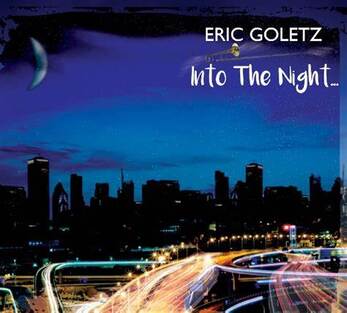
His new album, Into The Night, creates that hot fusion (that word, again) of Jazz, Funk, and Rock. Bringing the trombone to the forefront of Jazz-Fusion makes Goletz unique in the music world. It is a vision that has taken all of 30 years to finally bring together the elements that enabled him to recreate the sounds in his head.
And he’s got exactly the right musicians. With Goletz on trombone and keyboards are Henry Heinitsh on guitar, Mitch Schechter on piano, Mark Hagan on bass, Steve Johns on drums, and Joe Mowatt on percussion. The horn section is Vinnie Cutro and Freddie Maxwell on trumpet, Bob Magnuson on alto sax, Erick Storckman on trombone, and Jonathan Greenberg on bass trombone. That five-piece horn section appears on only two tracks, giving them a big band feel.
The album opens with the soulful Say What?? Eric gives the bluesy solo trombone intro and it serves well to kick off the song, as well as the album. The tune is a catchy one with all of the musicians contributing tight passages. Henry Heinitsh turns in some raucous and righteous guitar.
Mr. PC is John Coltrane’s tribute to legendary bassist Paul Chambers. With that in the background, Mark Hagan’s bass is featured beneath the melodic lines of the trombone. The trombone takes the Coltrane sax parts and widens the tone into something bluesier. Definitely a cool take on the number as Schechter’s piano and Heinitsh’s guitar take brilliant turns. I loved the original and I love this cover.
Into the Night opens with throbbing left-hand piano work. Bass and percussion joins in and the fun starts in earnest. Eric tears it up on trombone in furious frivolity. The percussive piano is a great touch. Listen for the great drumming of Steve Johns, one of the most exciting drummers in the Jazz world…or any world. The transitions are cool and the song just keeps on giving.
After Hours is perhaps the most soulful piece on the album. The tones from the trombone are exquisite and the rhythm section lays down the foundation for great work from piano and guitar. Steppin’ Out is a bouncy bit with the horn section adding the joyful background to the leads from trombone and guitar. The funk groove is tight and hard. This is riotously good stuff.
Cole Porter’s What Is This Thing Called Love gets the Goletz treatment in this hot rendition from the band. The original, of course, is sentimental and slow but Eric sets it on fire and gives is something to talk about. Oasis is a slow mover with warm tones and beautiful movement. Then Cat On the Corner takes us back to the great rhythms and memorable melodies that have come to mark this album. Heinitsh’s guitar is wickedly understated while the horn section embellishes the themes. The Peter Gunn pulses open a wide avenue for Eric’s trombone excursions and those cool piano riffs.
The album closes with Lullaby. The delicate strumming of the acoustic guitar sets the stage for the low, warm tones of the trombone. The melody is beautiful that sounds like it could have Michel Legrand—one of my all-time favorite romantic composers. The song is a duet between guitar and trombone and it completes the album by completing the album.
Eric Goletz makes Into The Night one of the most interesting and entertaining album of the year. His compositions are right on and the artists know how to take ownership of them. It engages the mind, the heart, and the tapping foot.
~Travis Rogers, Jr. is The Jazz Owl
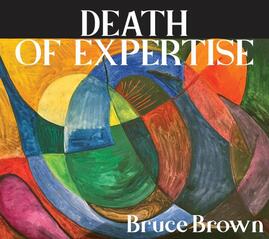
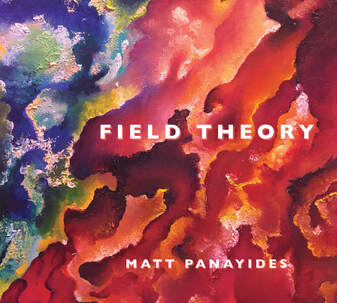
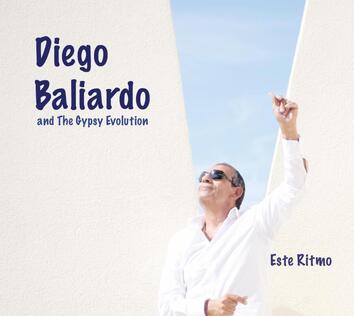
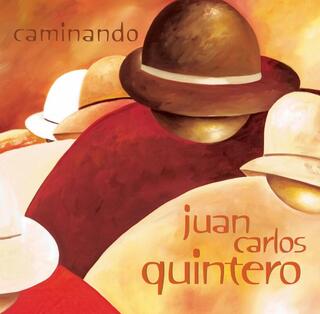
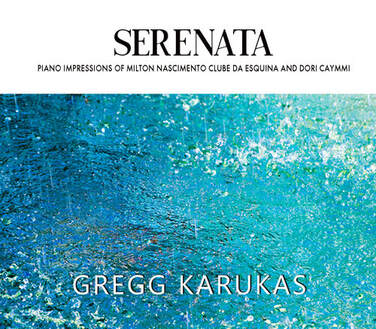
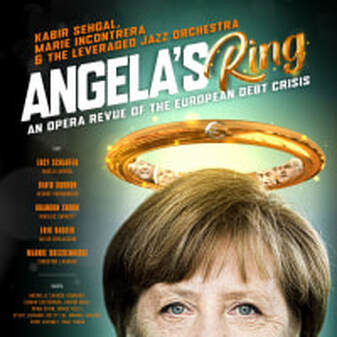
 RSS Feed
RSS Feed
